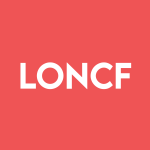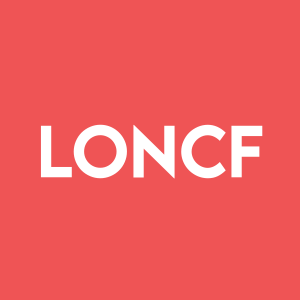Welcome to our dedicated page for Loncor Gold news (Ticker: loncf), a resource for investors and traders seeking the latest updates and insights on Loncor Gold stock.
Loncor Gold Inc. (LONCF) is a Canadian mineral exploration company focused on advancing its gold projects in the Democratic Republic of Congo's Ngayu Greenstone Belt. This page serves as the definitive source for all official company announcements, operational updates, and strategic developments.
Investors and industry observers will find timely access to press releases covering drilling results, resource estimates, and project milestones. The curated news collection includes updates on exploration programs, technical reports, and corporate announcements, providing essential insights into the company's progress in one of Africa's prospective gold regions.
Key content categories include quarterly financial disclosures, operational progress reports from the Adumbi deposit, management commentary, and third-party analysis of exploration data. All materials are sourced directly from company filings and verified partners to ensure reliability.
Bookmark this page for streamlined access to Loncor Gold's latest developments. Regular updates ensure stakeholders maintain current awareness of technical advancements and corporate strategy in this dynamic exploration environment.
Loncor Gold (OTCQX: LONCF) agreed to be acquired by Chengtun Mining for C$1.38 per share, an all-cash transaction valuing Loncor at approximately C$261 million on a fully diluted basis.
The Consideration represents a premium of ~33% to 30-day VWAP and ~16% to the October 10, 2025 closing price. Around 38% of shares are covered by voting support agreements. The arrangement includes a C$10 million mutual termination fee, purchaser advances of US$3.0 million for exploration, and TSX, court and shareholder approvals. The transaction is expected to close by Q1 2026, after which Loncor shares are expected to be delisted and reporting to Canadian and U.S. regulators ceased.
Loncor Gold (OTCQX: LONCF) has announced the addition of a new core rig at its Adumbi deposit to accelerate its deep drilling program. The deposit currently holds 3.66 million ounces of gold resources, comprising 1.88 million ounces of indicated resources (28.185 million tonnes at 2.08 g/t Au) and 1.78 million ounces of inferred resources (20.83 million tonnes at 2.65 g/t Au).
The newly mobilized PRD Multi Star rig is track-mounted and capable of coring down to 1,500 metres, with additional reverse circulation drilling capabilities. CEO John Barker cited slower-than-expected drilling progress in 2025 as the reason for adding this third rig from a second drilling company to expedite the approximately 11,000-metre deep drilling program.
Loncor Gold (OTCQX: LONCF) has announced promising results from its deep drilling program at the Adumbi deposit, which currently holds 3.66 million ounces of gold resources. Borehole LADD030 revealed multiple significant gold intersections, including 11.43 metres grading 1.77 g/t gold, 6.61 metres grading 4.56 g/t gold, and 7.73 metres grading 2.26 g/t gold.
The drilling was conducted below the open pit shell in the northwest of the deposit, intersecting several mineralized zones at a vertical depth of 643 metres. The total true thickness of the BIF package hosting the gold mineralization was 107.80 metres, approximately 100 metres below the USD1,600 pit shell outline.
Loncor Gold (OTCQX: LONCF) has announced the formation of a Special Committee in response to an unsolicited, non-binding offer from an undisclosed party regarding a potential transaction. The committee, consisting of independent directors Kevin R. Baker K.C. (Chair), Richard J. Lachcik, and William R. Wilson, will review and evaluate the potential transaction and any alternative opportunities.
The Special Committee's mandate includes conducting an independent and objective assessment of the proposed transaction and making recommendations to the Board. The company emphasizes that there is no guarantee of entering into any transaction and will provide updates as required by securities laws.
["Formation of an independent Special Committee demonstrates proper corporate governance", "Company received unsolicited interest, indicating potential market value recognition"]Loncor Gold (OTCQX:LONCF) held its annual shareholders meeting on June 27, 2025, where all six nominated directors were successfully elected to the board. The election was conducted by show of hands, with detailed voting results showing strong shareholder support. All nominees received over 95% approval, with Kevin R. Baker and Richard J. Lachcik receiving the highest support at 99.98% of votes cast.
Loncor Gold (TSX: LN) (OTCQX: LONCF) has successfully closed its brokered private placement offering, raising C$9.4 million in gross proceeds. The company sold 17,090,910 units at C$0.55 per unit, with each unit comprising one common share and half a warrant. Each whole warrant allows purchasing one common share at C$0.80 until May 23, 2028.
Red Cloud Securities acted as the sole agent, receiving C$503,999 in fees and 877,562 broker warrants exercisable at C$0.61 per share until May 23, 2028. The proceeds will fund exploration at the company's Imbo Project in the Democratic Republic of the Congo's Ngayu Greenstone Belt and general corporate purposes.
Loncor Gold (TSX: LN) has increased its previously announced private placement from C$5 million to C$8 million due to strong investor demand. The upsized offering consists of up to 14,545,455 units at C$0.55 per unit. Each unit includes one common share and half of one warrant, with each whole warrant exercisable at C$0.80 for 36 months.
Red Cloud Securities is acting as sole agent and has an option to sell an additional 2,545,455 units for up to C$1.4 million. The offering is available to purchasers in select Canadian provinces and is expected to close on May 23, 2025. Proceeds will fund exploration at the company's Imbo Project in the Democratic Republic of the Congo's Ngayu Greenstone Belt and general corporate purposes.
Loncor Gold (TSX: LN) (OTCQX: LONCF) has announced a brokered private placement to raise up to C$5.0 million through the sale of up to 9,090,909 units at C$0.55 per unit. Each unit includes one common share and half a warrant, with each whole warrant exercisable at C$0.80 for 36 months. Red Cloud Securities will act as sole agent with an option to sell additional units for up to C$1.0 million.
The offering, scheduled to close on May 23, 2025, will be available to purchasers in select Canadian provinces and internationally. Proceeds will fund exploration at the company's Imbo Project in the Democratic Republic of the Congo's Ngayu Greenstone Belt and general corporate purposes.
Loncor Gold (TSX: LN) (OTCQX: LONCF) has announced significant drilling results from its Adumbi deposit, which currently holds 3.66 million ounces of gold resources. The deepest drill hole LADD029 revealed multiple gold intersections including:
- 22.31 metres grading 3.05 g/t gold (including 4.64 metres at 5.83 g/t)
- 14.50 metres grading 4.24 g/t gold (including 10.17 metres at 5.23 g/t)
- 15.57 metres grading 3.35 g/t gold
The deposit currently contains an indicated mineral resource of 1.88 million ounces (28.185 million tonnes at 2.08 g/t Au) and an inferred mineral resource of 1.78 million ounces (20.83 million tonnes at 2.65 g/t Au) within a USD1,600/oz open pit shell. LADD029 extends gold mineralization to 805 metres below Adumbi Hill and intersected the thickest banded ironstone formation package ever drilled at Adumbi.


